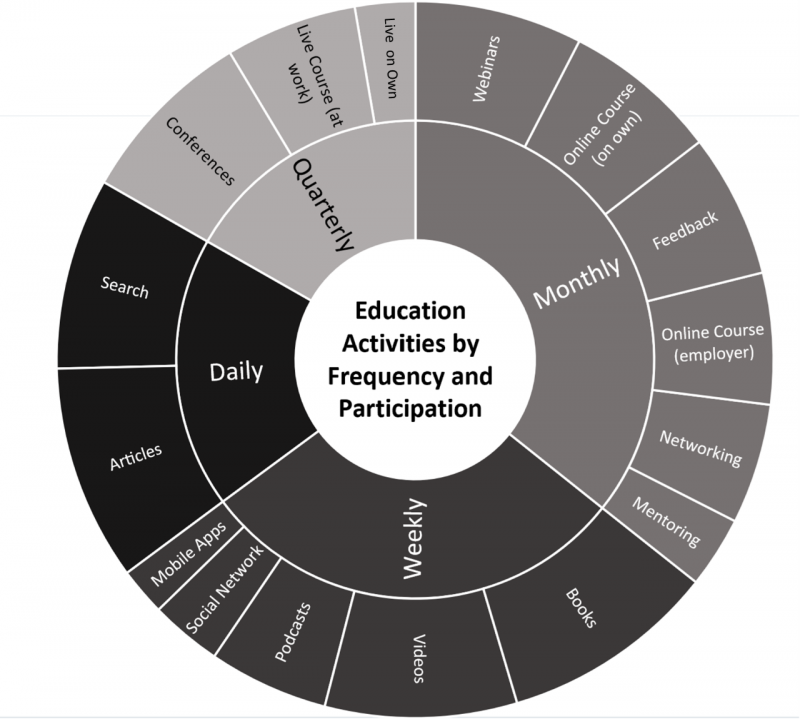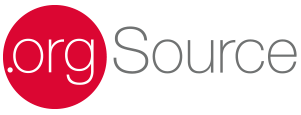An Updated Education Menu Keeps Members Coming Back for More

The pandemic has elevated trends that were bit players to the big screen. This phenomenon was highlighted in the presentations at .orgCommunity’s recent Solutions Day. If you weren’t able to attend our signature event, no worries. Over the next few weeks, I’m going to be writing about what I learned.
Associations stake their relevance, as well as large slices of budget pie, on providing quality professional development. So, staying in tune with the evolving education marketplace is critical. Sharon Rice, .orgSource’s Director of Business Strategy always has a finger on the pulse of the digital landscape. During her presentation, she shared her perspective on what members are looking for and what will keep them coming back for more.
Rice believes that the approach to education needs to become both broader and more specific. Leaders must cultivate a macro understanding of the business environment and a micro view of their members’ place in it. We know what happens to restaurants that are slow to realize that tastes have changed. We must stop relying on a dated menu and discover what, how, and where we can best serve our members.
“Even before the pandemic, the way professionals learn was shifting,” Rice advises. “If your education strategy is grounded in certification prep courses, CEUs, and conferences, you may be working harder to engage the same number of participants. This is a sign that your products could be out of alignment with the market.”
Understand Trends
The shifts in education reflect changes in consumer habits that have been taking root over several years. The pandemic has brought them into sharper focus. Rice recommends that we pay attention to these new expectations:
Learning to Skilling

The transition from learning to skilling is driving new strategies for delivering education. In traditional learning-based programs, the emphasis is on what you retain or know. Skilling, on the other hand, is focused on how well you can apply that knowledge. The goal is to improve performance. “That measurable impact is vital in the digital age when the need to develop new skills is accelerating,” Rice notes.
Standard to Customized
There may always be a place for certification programs that address broad standards of performance. But the digital age is conditioning consumers to expect a more customized approach. Education strategies need to drill down to the level of the individual learner, identify their knowledge gaps, and offer them the information they need to grow.
In-person to Online
The move to online learning has been slow due to the success of in-person programs. “While some organizations had already transitioned,” Rice notes, “the pandemic made it imperative to quickly master this technology. We were fortunate to have a community of suppliers who were ready to provide virtual platforms.”
Structured to Informal
Interest in out-of-the-office programs has been waning for several years. Employees still enjoy reserving dedicated time for learning, but increased professional and personal responsibilities make the all-day conference a luxury rather than a go-to experience. “We’re seeing a move to more informal education taking place in a variety of contexts,” Rice advises. “One-on-one training, online searches, videos, and podcasts are examples of this self-motivated, just-in-time learning.”
Scheduled to Spontaneous
As learning is dressing down from suits to yoga pants (quite literally these days), it is also occurring more spontaneously. The majority of skilling is happening on the job. When employees realize they need to build their resumes, they are proactively acquiring those new talents and abilities.
Hours to Minutes
Rice encourages leaders to pay special attention to microlearning, or content that can be delivered in an hour or less. Professionals are eager for snippets of education that can be consumed on-demand. Technology makes it possible for anyone to easily produce short but impactful video presentations. Rice offered her own Solutions Day presentation as an example of this technique.
Cultivate Variety

A Harvard Business School Study, How the Workforce Learns in 2019, illustrates the origins of these trends and analyzes how professionals are using various educational venues. The survey outlines learning activities on a quarterly, monthly, weekly, and daily basis. Results reveal that a mix of traditional activities, such as conferences and events, are co-existing alongside newer delivery strategies like videos, podcasts, social networks, and apps.
“Notably,” Rice says, “certification programs, the bread and butter of many associations, are absent. That is because professionals don’t engage in certification on a regular basis. Less than 20 percent of respondents said they engaged in certification activities. Millennials, in particular, like the freedom of using badging or stackable credentials to build professional credibility gradually.
“Leaders who are not considering how their future workforce is responding to certification may be caught short,” Rice cautions. “The bottom line is that an education portfolio must be diverse. There should be enough variety to ensure that members will consider the association the first choice for education.”
Fill Gaps by Understanding Needs
According to PwC’s (Price Waterhouse Coopers) 23rd Annual Global CEO Survey, upskilling is not an option; employees need to continually add to their strengths. Rice sites this quote from the survey to illustrate the point: “The fourth industrial revolution has ushered in new business models and ways of working that require critical new technical, digital, and soft skills.”
“The pandemic has been helping us to learn this lesson,” Rice observes. “Over the last several years .orgSource has been studying how the Fourth Industrial Revolution is impacting associations and work. Hiring ready-made teams equipped with skills to navigate the digital marketplace isn’t feasible. Most employers will need to build this talent within their staffing. Associations can fill the gap by understanding their members’ individual educational needs and providing microlearning programs to help them develop those skills.” The goal should be to customize a diverse portfolio of products that can be tailored to create personal learning journeys.
Use Volunteers’ Expertise
The ability to impact members in this specific way begins with understanding the skills and competencies they need to sustain their careers. “This is a perfect opportunity for volunteer leaders,” Rice suggests. “They can draw on their experience and knowledge to create these competencies in an outline or framework. Then, based on that information, an individualized assessment can be developed.
“This type of survey is similar to StrengthsFinder,” Rice says. “It’s an analysis of your talent DNA. Employees can take the assessment year-over-year to check their progress. The beauty of this process is that associations can also use this information to see exactly what their members want and need.”
Don’t Wait to Get Started
Checking in with your members to ask how their lives and their jobs have changed over the last six months is a start to updating your education program. There’s a real possibility that many workers will never go back to an office. People are learning how to multitask in ways they couldn’t have imagined. Find out what is happening with your group, and act quickly to address those issues.
This approach to education puts the spotlight where it should be, on your members. We can’t keep providing the menu we want to serve. We need to identify what our customers are eager to consume. This is not as difficult as it sounds. “Every association is a warehouse of data,” Rice says. “Begin by taking stock of the information you have. Then gather what is missing. Assess your current portfolio and ask whether the delivery, messaging, and audience are on point. When you offer the menu your members want, they’ll keep coming back for more.”

